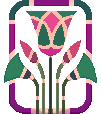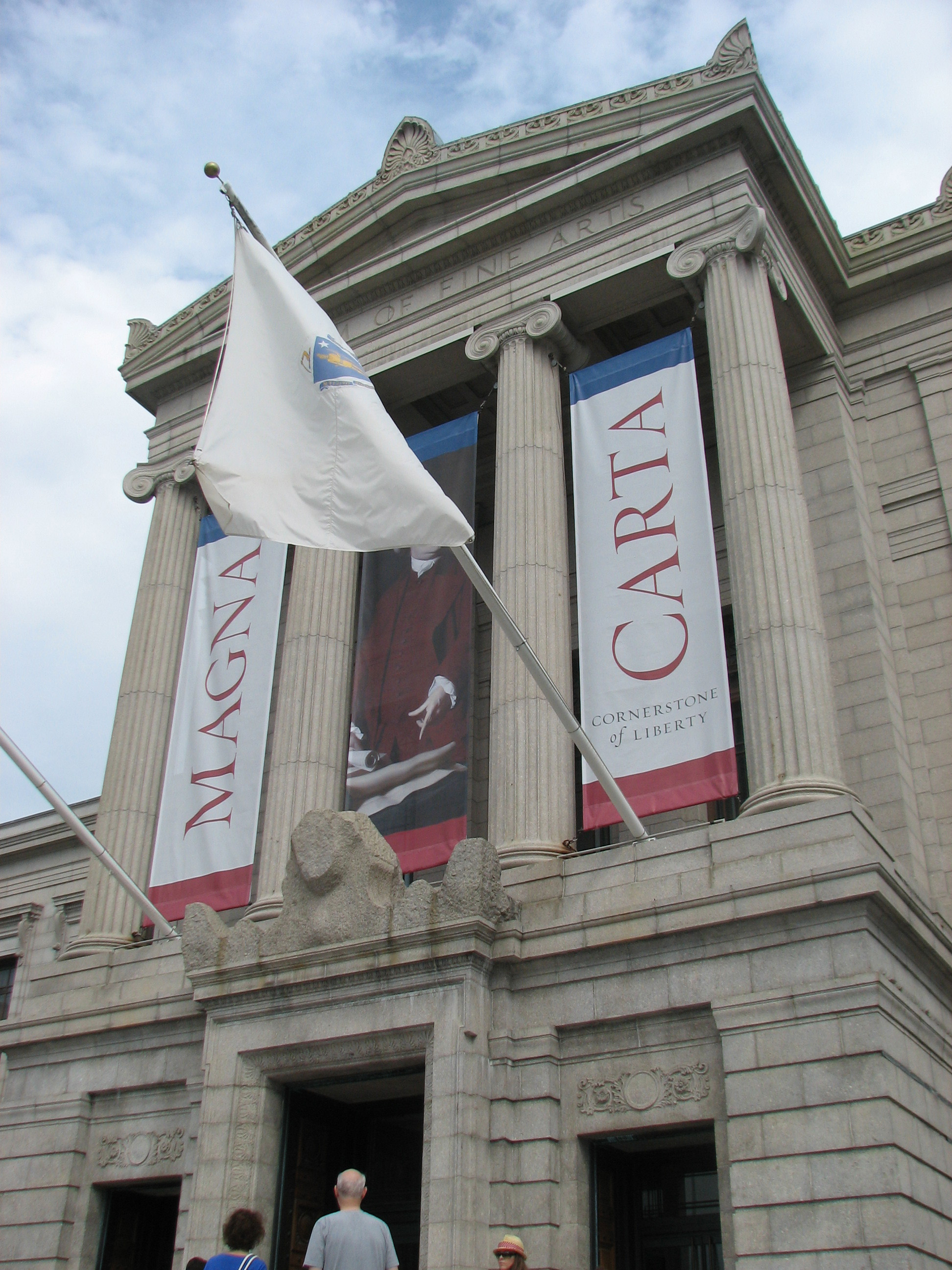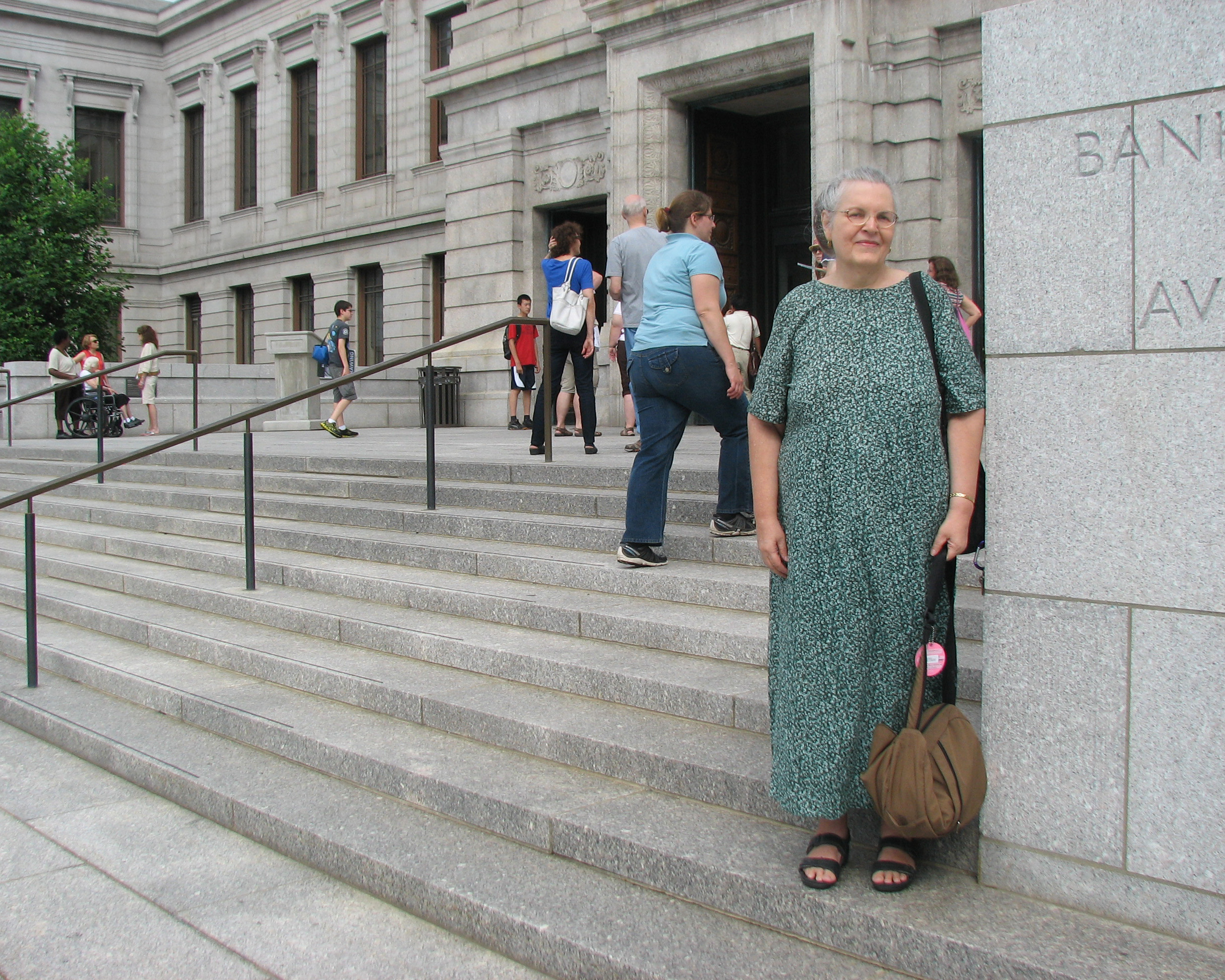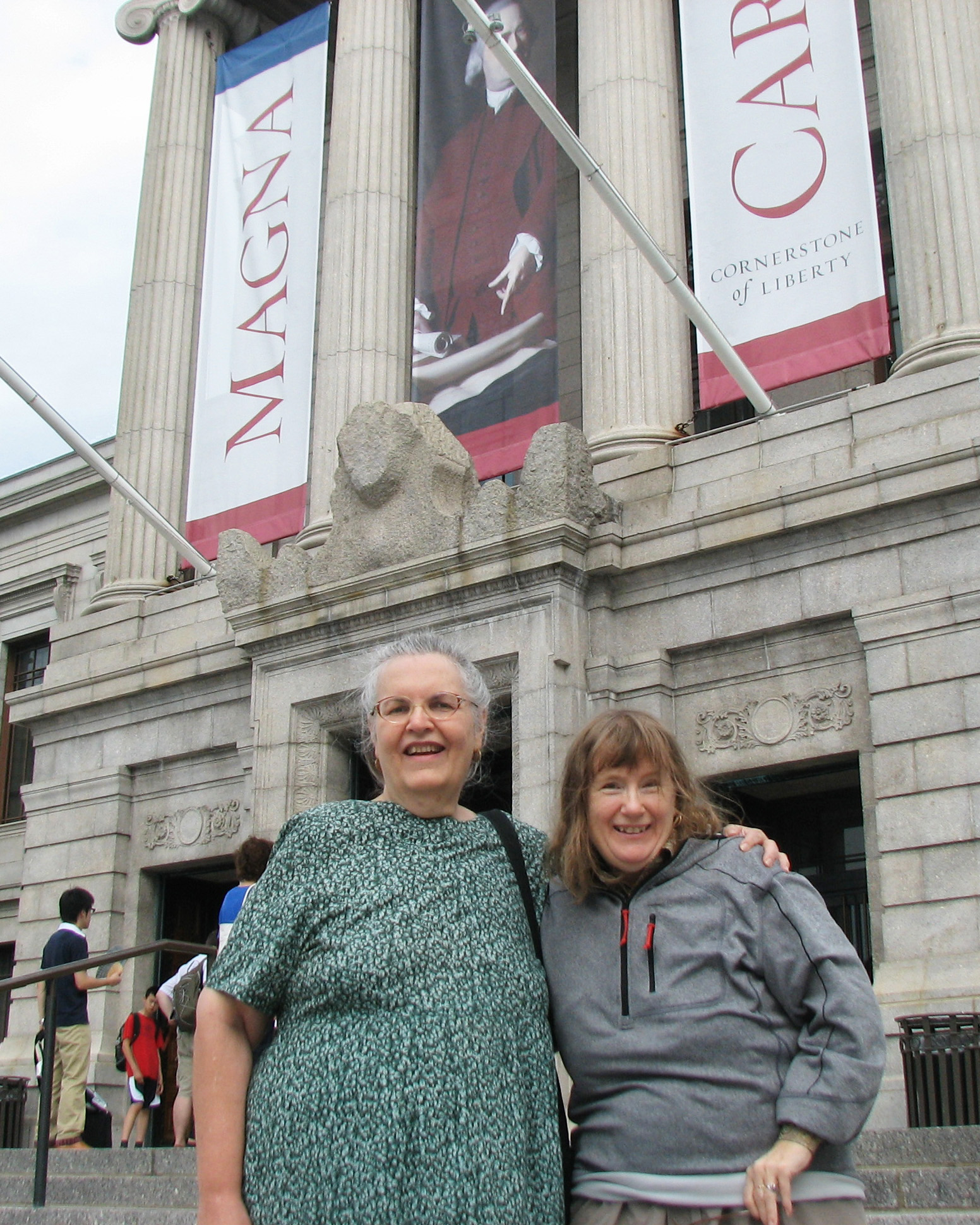
Thursday, July 3, 2014 A
"Going to the MFA!"
9:59pm

Thursday, July 3, 2014 A
|


Oh, the excitement upon seeing the steps leading to its doors!

Seeing me photograph Julia, a nice lady took a photo of the two of us together.
|
Bee-line to the ancient Egyptian things, but first some other 'ancient' areas demanded at least a few photographs. Another of those Assyrian god-dudes holding the pine cone, an intriguing Hershey's kiss shaped helmet, some pieces with Egyptian influence...
|
Forward...
Go Back to Archives...
Go Back to Main Journal Index Page...
Go to Index of Joan's pages...
![]()
© Joan Ann Lansberry